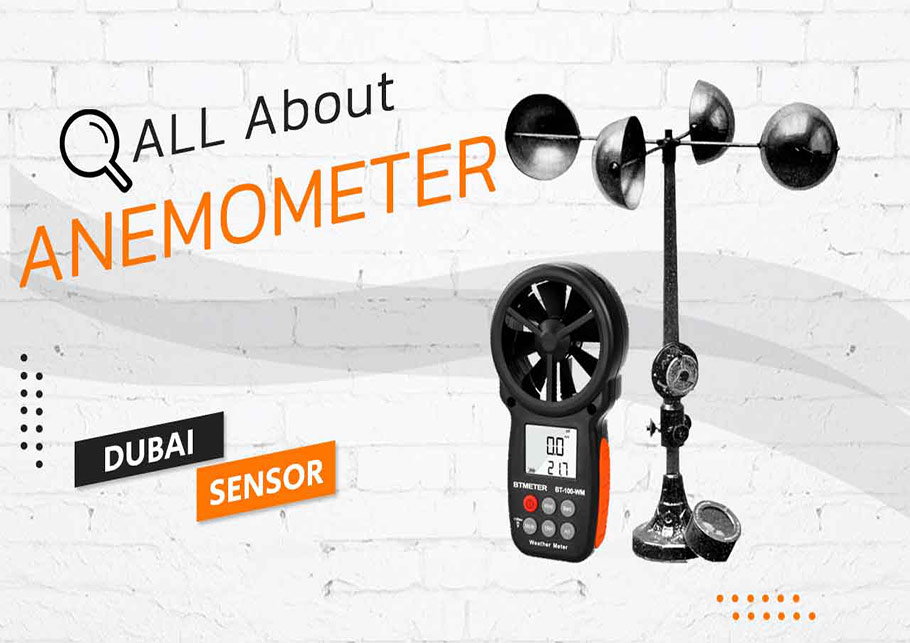How an Anemometer Can Enhance Your Weather Surveillance System
How an Anemometer Can Enhance Your Weather Surveillance System
Blog Article
Anemometers Introduced: Comprehending Their Importance in Ecological Tracking and Precaution
The function of anemometers in environmental surveillance and security steps is usually underestimated, yet their value is undeniable. These instruments have a long background rooted in clinical query and technical innovations, progressing to become important devices in various fields. From weather forecasting to aviation safety and security, anemometers play a vital role in supplying exact information that notifies decision-making processes and enhances total safety and security. Understanding the ins and outs of anemometers reveals a globe of vital insights that are basic to our understanding of the atmosphere and the measures we take to ensure safety and security.
Background of Anemometers
The evolution of anemometers can be traced back to the ancient civilizations where simple wind gauging devices were first made use of. These early wind dimension devices laid the structure for the advancement of much more sophisticated anemometers gradually. Among the earliest well-known anemometers was the hemispherical cup anemometer created by Leon Battista Alberti in the 15th century. This style was composed of 4 hemispherical cups that accumulated wind energy, offering a dimension of its strength based upon the rate of rotation.
Over the years, innovations in technology led to the development of more modern anemometers, consisting of ultrasonic anemometers and laser Doppler anemometers, supplying increased precision and effectiveness in determining wind rate and direction. The background of anemometers showcases an impressive trip of innovation and progression in the field of weather forecasting.
Types of Anemometers
Throughout the area of meteorology, various kinds of anemometers have actually been developed to accurately measure wind rate and direction. Sonic anemometers use ultrasonic signals to gauge wind speed and instructions properly. Hot-wire anemometers operate based on the concept that the cooling result of wind on a heated cable is symmetrical to the wind speed.
Applications in Meteorology
Having discussed the various kinds of anemometers made use of in meteorology for measuring wind rate and instructions, it is vital to explore their practical applications in the field. Anemometers play a crucial role in weather forecasting by providing precise and real-time information on wind problems (anemometer). Meteorologists make use of anemometers to keep track of wind rate and instructions to anticipate weather condition patterns, issue cautions for serious weather occasions like twisters, typhoons, and storms, and analyze atmospheric problems for aviation security
In weather forecasting, anemometers assist in recognizing regional and local wind patterns, which are crucial for predicting weather adjustments and determining weather patterns. These tools are additionally made use of in study to research microclimates, city heat islands, and air pollution diffusion. Additionally, anemometers are employed in farming to maximize plant management techniques, such as watering and chemical application, based on wind problems.
Significance in Aviation Safety And Security
An integral element of ensuring aviation safety exists in the careful tracking of wind problems utilizing anemometers. Anemometers play a crucial role in aeronautics by providing real-time data on wind speed and instructions, aiding pilots in making educated decisions throughout flight, liftoff, and touchdown. Strong and unpredictable winds can substantially impact airplane operations, making it essential for air travel authorities to count on accurate wind dimensions to make sure the safety of passengers and team.

In the dynamic setting of air travel, where also minor changes in wind speed and instructions can have profound effects, anemometers stand as vital devices for advertising risk-free and protected flight.
Function in Environmental Study
Exactly YOURURL.com how do anemometers add to improvements in ecological research? Anemometers play a crucial role in ecological study by providing necessary data on wind rate and instructions. This details is essential for recognizing various atmospheric processes, such as air pollution diffusion, climate patterns, and climate modification. By properly determining wind features, anemometers assist scientists analyze the movement of toxins airborne, evaluate the influence of commercial emissions, and forecast the spread of pollutants in the setting.


Final Thought
Finally, anemometers have played an important function in ecological tracking and security procedures. With an abundant history and numerous kinds offered, these gadgets have actually been widely used in weather forecasting, aeronautics security, and environmental study. Recognizing the significance of anemometers is important for properly determining wind speed and instructions, which is important for forecasting climate patterns, ensuring risk-free aeronautics operations, and performing ecological research studies - anemometer. Their payments to these areas can not be ignored.
One of the earliest known anemometers was the hemispherical mug anemometer developed by Leon Battista Alberti in the 15th century. Over the years, advancements in modern technology led to the growth of more modern-day anemometers, including ultrasonic anemometers and laser Doppler anemometers, using raised precision and efficiency in determining wind rate and direction. Hot-wire anemometers run based on the principle that the cooling result of wind on a warmed wire is proportional to the wind rate. Meteorologists make use of anemometers to keep an eye on wind rate and instructions to anticipate weather condition patterns, problem warnings for helpful site extreme climate events like storms, hurricanes, and twisters, and examine atmospheric conditions for air travel safety.
Comprehending the value of anemometers is crucial for accurately measuring wind rate and instructions, which is essential for anticipating weather patterns, ensuring safe aviation procedures, and conducting ecological studies. (anemometer)
Report this page